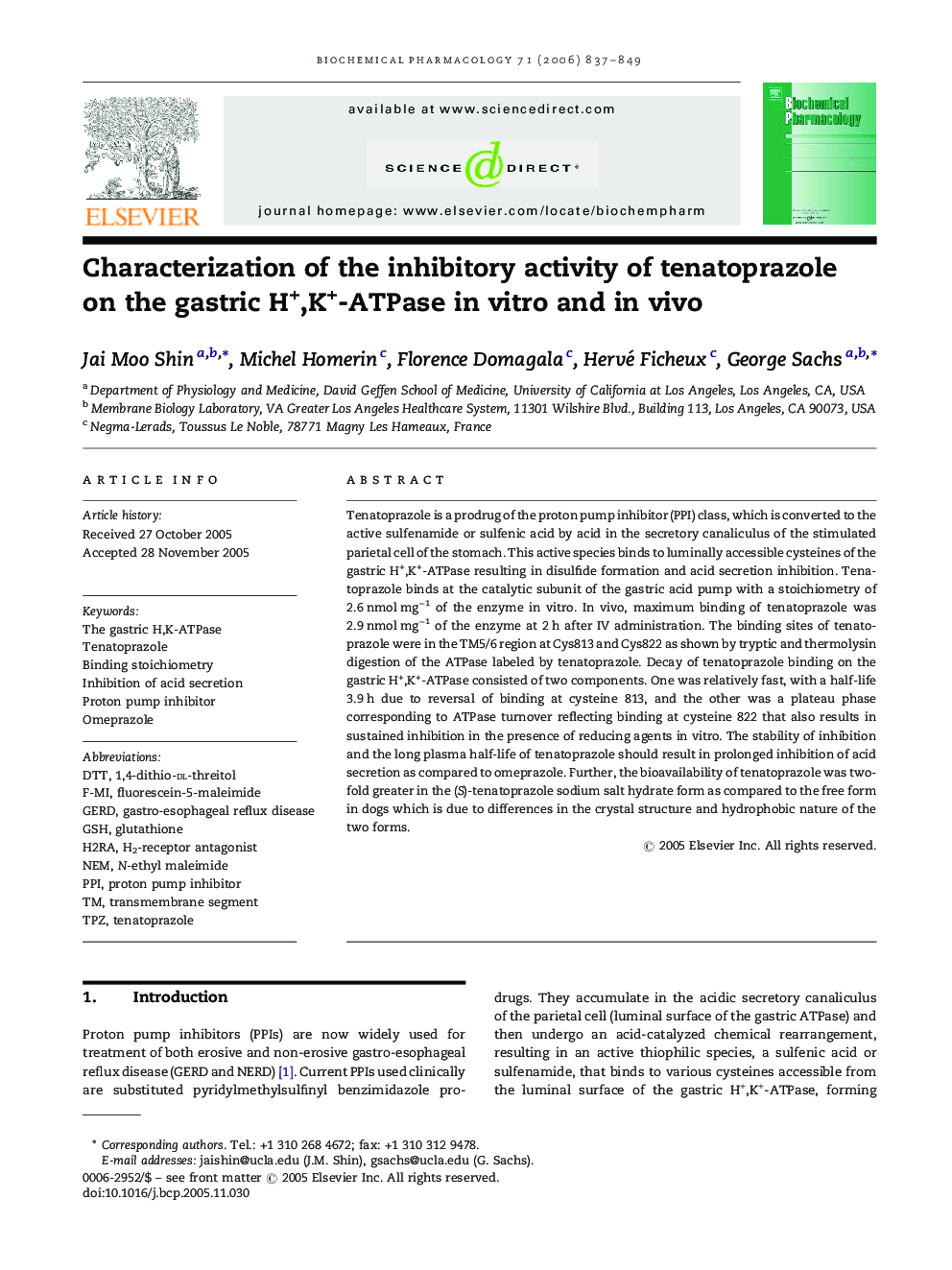| Article ID | Journal | Published Year | Pages | File Type |
|---|---|---|---|---|
| 2515589 | Biochemical Pharmacology | 2006 | 13 Pages |
Tenatoprazole is a prodrug of the proton pump inhibitor (PPI) class, which is converted to the active sulfenamide or sulfenic acid by acid in the secretory canaliculus of the stimulated parietal cell of the stomach. This active species binds to luminally accessible cysteines of the gastric H+,K+-ATPase resulting in disulfide formation and acid secretion inhibition. Tenatoprazole binds at the catalytic subunit of the gastric acid pump with a stoichiometry of 2.6 nmol mg−1 of the enzyme in vitro. In vivo, maximum binding of tenatoprazole was 2.9 nmol mg−1 of the enzyme at 2 h after IV administration. The binding sites of tenatoprazole were in the TM5/6 region at Cys813 and Cys822 as shown by tryptic and thermolysin digestion of the ATPase labeled by tenatoprazole. Decay of tenatoprazole binding on the gastric H+,K+-ATPase consisted of two components. One was relatively fast, with a half-life 3.9 h due to reversal of binding at cysteine 813, and the other was a plateau phase corresponding to ATPase turnover reflecting binding at cysteine 822 that also results in sustained inhibition in the presence of reducing agents in vitro. The stability of inhibition and the long plasma half-life of tenatoprazole should result in prolonged inhibition of acid secretion as compared to omeprazole. Further, the bioavailability of tenatoprazole was two-fold greater in the (S)-tenatoprazole sodium salt hydrate form as compared to the free form in dogs which is due to differences in the crystal structure and hydrophobic nature of the two forms.
